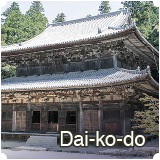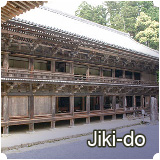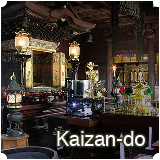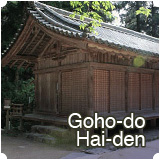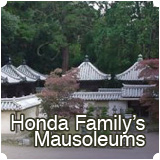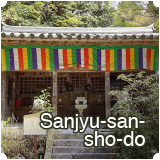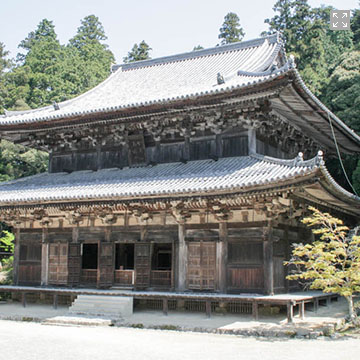The Layout of Temple Buildings
Jumyo-in / 十妙院
Jumyo-in Temple was constructed in 1691 (Genroku 4th yr), and a large-scale repair after demolition started in 1992 (Heisei 4th yr), and was completed in 1995 (Heisei 7th yr).
Consisting of Hojyo (a square room) with a Buddhist altar and Kuri (a living space for priests) with a kitchen, the structure of this sub-temple as well as Juryo-in Temple is very unique and is known as an Engyoji style.
Senju-Kannon-Bosatsu (the thousand-armed Avalokitesvara or the Buddhist Saint of Mercy) is enshrined here, and is flanked by two attendants, Shogun-jizo (Ksitigarbha or the Buddhist Saint of Winning Battles) and Bishamonten (Vaisravana or the Buddhist Saint of Winning Battles and Protecting Treasures).
Inside, 36 Fusuma-e, paintings on Fusuma (sliding doors covered with paper or cloth on wooden frames), were painted by Kano Eino from the Kano school in the middle of the Edo period (1603-1868).
Constructed by Kano Masanobu, the Kano school, the most famous Japanese painting school, which thrived from the middle of the Muromachi period to the end of the Edo period (the 16th century - 19th century).
Both the inside of Jumyo-in and Fusuma-e are only open to the public on special occasions.
a National Important Cultural Property
Fusuma-e by Kano Eino / 狩野永納筆の襖絵


TBA...


